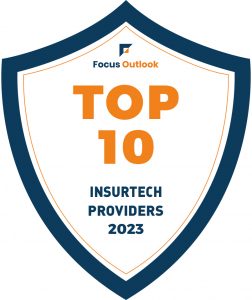Organizations are increasingly looking for Agile based transformation of Legacy Applications What is driving the wave for Agile lies in the very principle of the approach.
The agile modernization partitions App Modernization into phases that are assessed through quick iterations or sprints. The method is efficient and flexible and rapidly adapts to the changes, something crucial to meet continuously evolving market demands and technological advancements.
Also, traditional monolithic applications like Oracle Forms (or others like Mainframe Applications / PowerBuilder Apps) are complex, bulky, and prone to largely unknown issues.
Clear, agile transformation is known to handle such hiccups with custom solutions effectively and efficiently, is a perfect solution to make applications future-proof.
Let us take a closer look at App Modernization through Agile.
Table of Contents
Understanding Agile Modernization
Keeping up with the fast-paced technological changes and high user expectations has become challenging for many businesses. Agile encourages quick learning and high-frequency feedback loops and is ideal for combating such fast changes in the business world.
Agile modernization goes way beyond upgrading technologies or applications. It transforms not only your software but also the organization. It encourages businesses to become nimbler in all their operations.
Agile App Modernization is a tactical shift in the mindset at every organizational level, from developer to C-suite. It calls for greater flexibility, rapid learning, and adaptation to changes – for many organizations, this is a massive cultural shift.
Agile Modernization of Apps: Practitioner’s Approach
From a practitioner’s perspective, many modern market factors call for agile methods for App Migrations and Modernization: customer satisfaction, business and market needs, system quality, frequent feedback, and tight project deadlines, to name a few.
Let us first understand the fundamental practices for agile preparedness at different organizational levels.
Management: C-suite or management also leads agile by proactively contributing to the App Modernization Solution
The Leadership must:
- Assign a team leader who gets executive support.
- Vocally champion the approach if it is precedence setting.
- Encourage and provide leadership in building an agile mindset through social activities (town halls, executive meet events).
- Ensure knowledge acquisition for agile transformations.
Manager & Team Level: A strategic and tactful team organization is crucial for implementing agile practices.
- Identify and recruit agile champions who are catalytic change agents.
- Encourage active customer participation with constructive feedback.
- Use HR’s help in building self-regulating teams.
- Ensure coaching and continuous learning.
Technology: Timely adaptation of appropriate technologies can mean the difference between success and failure for agile modernization.
- Embrace engineering excellence for high productivity, product quality, and timely delivery.
- Acquire the right tools. Cloud-based or cloud-native platforms, automated testing, and strong integration are key elements of agile development.
Process: Align every process in the organization to agile best practices.
- Build sessions on process quality, maturity matrixes and best practices.
- Establish a community of standard best practices.
- Select and customize the agile approach for your App transformation projects. Some popular approaches are Kanban, Scrum, and XP.
- Incorporate instant feedback and product backlog to prioritize transformation modules.
Having your team, infrastructure, and processes aligned with the agile methodologies gives you a solid foundation to begin the project. However, in a survey, 38% of respondents held “lack of management” as a cause for agile project failure.
Here is a practical guide for managers to develop and implement agile App Modernization Solutions at ground zero.
Agile Coaching
- Agile methodologies break down bulky monolithic Apps such as Oracle Forms or Mainframe Apps into smaller iterative modules or phases. Each sprint continuously improves modules through feedback. Prioritizing modules based on the business value and involving every stakeholder ensures quick responses to the changes and minimum disruption.
Agile Metrics
- Agile methods allow you to optimize resource allocation and utilization of expertise based on tasks’ priority. It also ensures flawless migration of intricate coupling and dependencies of Legacy applications to the target cloud environment based on pre-defined metrics while maintaining performance.
Value Stream
- Agile modernization enables complete visibility into the project’s progress through demonstrations and feedback loops. It keeps the team alert about the project scope changes and encourages delivering value within deadlines.
Risk Mitigation
- Migrating Apps in practical iterative increments gives managers enough space to identify and address risks early in the process.
Continuous Improvement
- Agile methods allow teams to retrospect on the processes and learn quickly. It makes the entire organization future ready.
Things That Can Go Wrong in Agile Transformation
Given the intricacy of Legacy applications and the demands of agile processes, even well-planned projects can derail. Here is a list of common challenges and missteps during Legacy app modernization that lead to poor outcomes.
Lack of Agile understanding
- Most CTOs consider agile transformation a quick migration of legacy applications to the new target environment. They focus their attention on agility in product development processes. However, agile modernization is a holistic approach to transforming the entire organization, its processes, people, and products.
Mimicking Other Agile Projects
- Everyone is doing this, so let us do it too. And there begins the problem. Using a case study of a transformation video as a blueprint for agile migration is a huge mistake. Agile is all about small experiments and improving on them quickly. It is a continuous learning process. You need an agile coach to craft an agile roadmap for your organization’s priorities and assist in informed decision-making.
Losing Agile Post-Pilot
- Most companies restrict agile to the pilot and within their small organization teams, hoping for the outcomes. It is similar to sitting at the shore and hoping to catch a big fish. You know that is not going to happen. You need to go into the deep waters to make that happen. Similarly, taking agile beyond small teams and pilots is when you get the real advantage.
Underestimating the Right Hiring
- Agile does not favor micromanaging. So, you must hire individuals who can manage themselves and add value to the projects. Your acquisition team must:
- Focus on people along with skills.
- Find intrinsic skills required for App Modernization.
Project-Oriented Not Product-Oriented
- Agile migrations of Legacy Applications are demanding projects, with a lot happening within tight deadlines. It is easy for managers to concentrate on fixed project time, budget, and scope. However, agile modernization requires a focus on deliverables and constant optimization of the target applications en route.
Breaking the Barrier of App Modernization Solutions with Agile Best Practices
Why invest in agile modernization if so much can go wrong? Because it is the need of the hour.
Agile is ideal for app modernization (including Legacy Apps) thanks to its flexibility, speed, and scalability. Also, following the agile best practices minimizes failure risks and delivers maximum benefits for the modernization project.
Fostering Agile Culture and Agile Mindset
- Make the agile approach an integral part of the organizational culture. Everyone should come on board before the onset, from leadership to developers, from intrinsic teams to new hires.
Collaborative Processes
- Agile does not favor siloed working. It is a team effort that calls for shared ownership, including active participation from leadership and clients.
Crush Technology Bottlenecks
- Moving Legacy Apps to cloud-based applications, from monoliths to microservices, is already a massive technological leap. When doing it the agile way, the choice of the right tools and infrastructure becomes more crucial.
Create Sprint Backlog
- Sprint backlogs define the high-priority application modules for migrating Apps to Modern Solutions. The team can focus and develop specific tasks for these backlogs.
Create Sprint Retrospectives, Reviews, and Progress Monitoring Charts
- Conduct meetings to monitor the work done and the remaining work for every sprint. These meetings also decide how to alter a sprint to make it more fruitful.
Define Sustainable Pace and Projected Velocity.
- Agile sprints are fast-paced and can quickly become challenging to handle. Establish a manageable pace based on your capabilities, expertise, and resources. It helps in planning iterations deliverables and reduces overtime.
Conclusion
IT modernizations using agile methodology bring both challenges and opportunities. The success depends on how effectively you implement the best practices to ensure a smooth sailing.
Kumaran’s system is a pioneer in legacy system modernization with over three decades of experience. We ensure a hassle-free agile modernization of Oracle Forms, Power Builder and Mainframes, drawing the maximum benefits of the flexibility and scalability of the iterative agile approach. We deliver:
- Accelerated IT transformation
- Cloud adoption support
- Enhanced operational efficiency
- Assistance in developing a culture for change, automation, and agile operations
Talk to us for a free consultation in identifying the best possible approaches to your modernization project.



